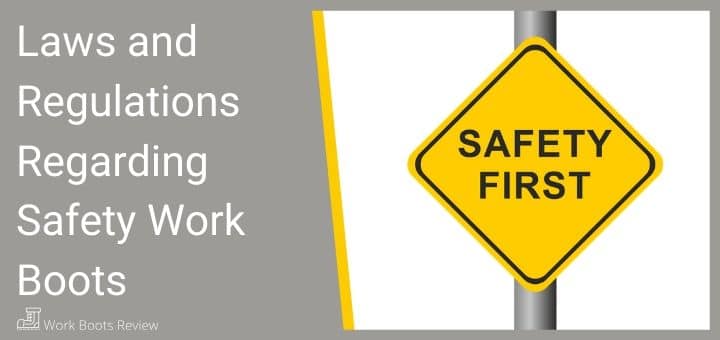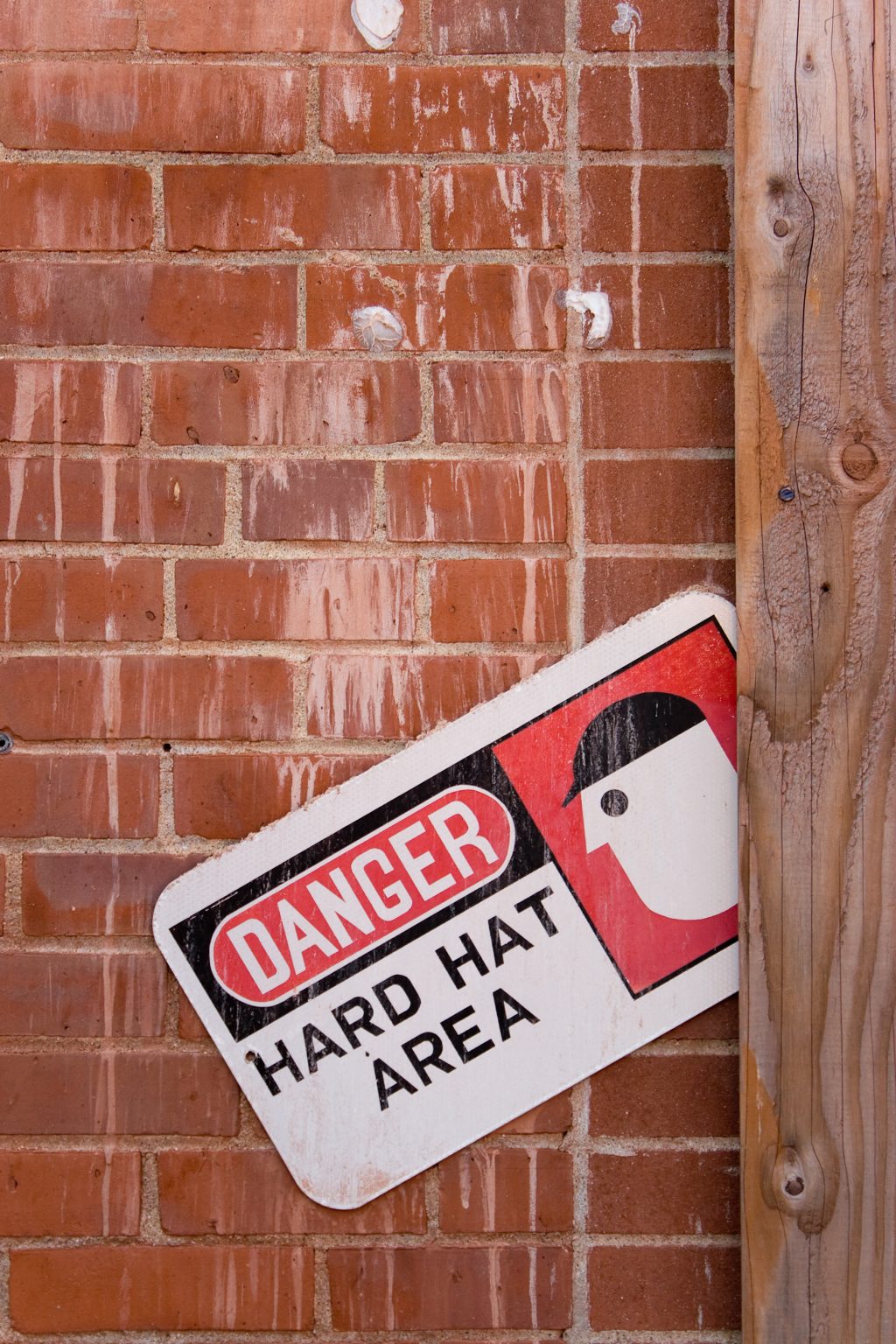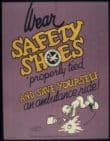
No one wants to get hurt at work. Wearing the proper boots or shoes can reduce workplace injuries.
That’s why the Federal Government has created regulations that the Occupational Safety & Health Administration updates and enforces. OSHA requires protective footwear in industrial settings for workers.
To abide by federal regulations adopted and enforced by the Occupational Safety and Health Administration (OSHA), protective footwear is required for any worker in industrial settings. OSHA has an abundance of rules and regulations regarding workplace safety, including section 29 CFR 1910.136 on occupational foot protection.
If you are interested, you’ll find footwear listed under the Personal Protective Equipment section in the Occupational Safety and Health Standards. This section on foot protection is relevant to employers and employees in the construction, industrial, government and service fields.
The Laws And Standards Surrounding Safety Workboots
As mentioned earlier, OSHA is the Federal agency governing the who, what and where of safety when it comes to a national workplace foot protection standard. Protective footwear is part of an employee’s PPE.
Personal Protective Equipment consists of all the clothing and accessories that are needed to protect against the specific dangers of a work environment. PPE includes safety shoes and boots, gloves, gas and dust masks, hard hats, eye protection, and metatarsal protection, along with other items.
I’m paraphrasing, but the regulations state that everyone exposed to hazards in the workplace – such as, falling objects, slipping, chemicals, electricity – must wear Personal Protective Equipment, which includes your safety shoes.

Updated ATSM International Safety Standards Explained
In the United States, ASTM International sets the protective footwear performance requirements that are codified in OSHA regulations. A boot or shoes isn’t considered safety footwear unless it complies with ATSM requirements.
ASTM committees are dues to meet this year to update the requirements. The current version regarding protective footwear is F2413-18: the Standard Specification for Performance Requirements for Protective (Safety) Toe Cap Footwear.
There was a change in how protective boots and shoes are labeled under F2413-18 versus previous standards . Previously, labels contained numbers to indicate the level of protection provided by the work boot or shoe for the hazard.
Under F2413-18, we now have a pass-fail footwear regulation in place.
To begin, footwear must be tested by an independant third-party lab in order to comply. This lab must be willing to issue a Certification of Conformance for the test report.
There is now a bar in place which all protective footwear must meet in order to get a ASTM label.
ASTM International has done away with the lower protection ratings. For example, the “impact” hazzard covers protection from falling or dropping objects onto the foot. If a test result indicated a boot could protect a foot from 50 ft-lbs of force onto the toe of the shoe, it used to earn a I/50 rating.
This is no longer the case. In order to earn an Impact Resistance rating on the label, it must meet a performance requirement of protection from 75-ft-lbs of force. This now gives a boot the right to a “I” label.
The same rating change applies to compression. Resistance to “compression” provides protection from rolling object accidents. Compression resistance ratings start with a “C/” A shoe that withstands 2,500 pounds of force onto the toe can be labeled as “C” under F2413-18.
ASTM F2413 still requires compression- and impact-resistant work boots to have built-in toe caps (i.e., the safety toe caps are permanent and can’t be removed). These boots and shoes must be labeled as I/C. You’ll find these usually on steel toe boots or a composite toe boot.
The new standard did provide varying levels for Static Dissipative (SD) protection. This is a measurement of a type of electrical resistance and conductive protection for footwear. If your work area has the risk of electrical shock, you’ll want this additional protection from that risk of injury.
SD labels will indicate how many megaohms of electrical resistance the boot or shoe provides. They can be rated SD 100, SD 35 or SD 10 based on the level of resistance.
Why are OSHA Safety Footwear Regulations Important?
In short – not paying heed to OSHA will cost you in time, money and reputation. You and your employees might get hurt as well.
Not complying with OSHA regs risks warnings and fines. While not every infraction is this expensive, it is important to note OSHA raised its maximum penalties at the start of 2022 to $14,502 for “serious” and “other-than-serious” violations. You’ll also be on the hook for $14,502 each day for “failure-to-abate” violations.
In addition, “willful” and “repeat” violations can now carry a maximum penalty of $145,027.
While fines are expensive, lost time and productivity from injuries are also costly.
The most recent data from the U.S. Bureau of Labor Statistics shows there were 90,000 occupational foot and ankle injuries in 2020. Skimping on the level of protection for your employees can be very costly – for both the employee and company.

What are in the OSHA Standards?
You can find the regulation online. Standard number 29 CFR 1910.136(a) states:
“The employer shall ensure that each affected employee uses protective footwear when working in areas where there is a danger of foot injuries due to falling or rolling objects, or objects piercing the sole, or when the use of protective footwear will protect the affected employee from an electrical hazard, such as a static-discharge or electric-shock hazard, that remains after the employer takes other necessary protective measures.”
29 CFR 1910.136(a)
OSHA has recommended protective footwear be worn to limit the chance of injury in any situations involving:
- Slippery or wet surfaces
- Electrical hazards
- Poisonous/corrosive materials
- Hot, molten metal that could splash up onto feet
- Potential for explosion from static electricity
- Heavy rolling objects that could crush feet
- Sharp objects that potentially could puncture a foot
While OSHA recommends a safety assessment by the company should be done by a qualified consultant or safety officer, workers should not be passive about letting a corporation tell them what is necessary. After all, it’s your feet that are at stake.
Who Should Wear Safety Workboots
The short answer is anyone working in an industry where their feet are at risk of damage should wear safety workboots.
The right amount of protection for your feet really does come down to the industry you work in. What is an acceptable foot protection level for a factory floor worker likely won’t work for a paving or roofing worker – they obviously need more heat-resistant soles.
Early we listed the situations OSHA recommended required protective shoes or boots. Here is a list of some industries that have risks from that list:
- Construction workers
- Roofers
- Pavers
- Loggers
- Foundry workers
- Concrete pourers
- Military and police
- Fishermen and women
- Landscapers
- Miners
- Linemen and Tower Climbers
- Cable Techs
- Oil and Gas workers
- Mill workers
In Conclusion

Your Safety Work Boots are there to protect your feet, which are the most vital part of your body, despite your hands, enabling you to perform at work. Without your feet, you will not be able to work the same way or walk again for that matter.
Take this into consideration when selecting a pair of work boots.
Ask what your company regulations are, and take heed of the present risks, so that you are able to make an informed decision.
Also, keep in mind to take good care of your work boots in order for them to function properly for a long time to come.
In the end, it is your safety and well being that is at stake here, so keep to the rules and make sure that your work boots are up to standard for your work environment!
